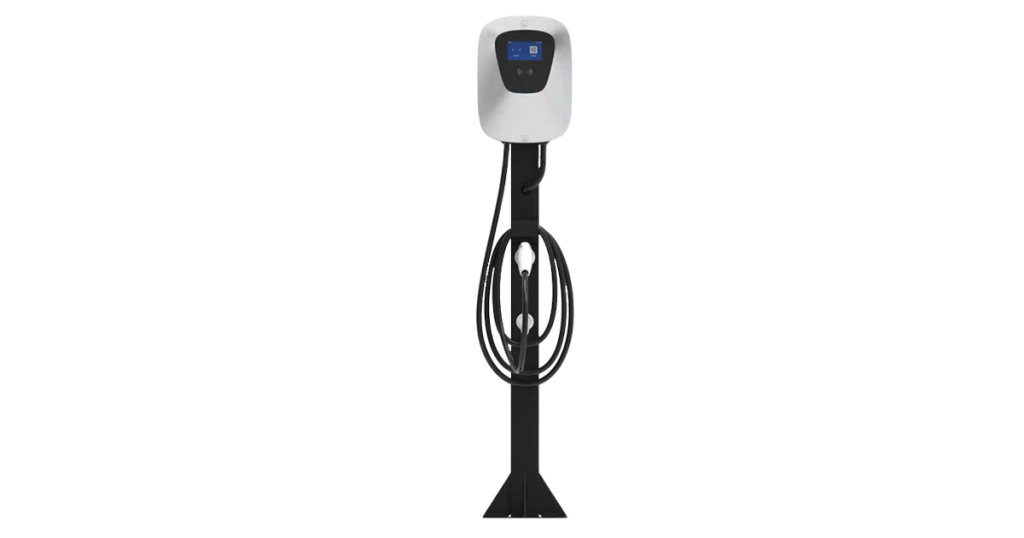
Products
Fast, Reliable, Everywhere

Solutions
Efficient, Innovative EV Charging Solutions.
News
We are committed to the innovation and application of EV charging.
This may be partially explained by the various charging methods that are available for electric cars. The port that allows you to connect and recharge might be different based on the brand and model of your automobile. It's kind of like how various countries have different types of plug outlets for electrical appliances.
EVs are becoming more popular in every part of the globe. The infrastructure required to charge them is evolving in a manner that is specific to each country, location, and use case. This results in a significant degree of complexity for worldwide OEM EV chargers and a large number of different component numbers. But the method, the level, and the kind of electric car that permits the utilization (EVSE), which includes EV chargers, are the three characteristics that are commonly acknowledged for this category.

All EV chargers are not equal:
Mode: The mode indicates how the EVSE interacts with the public power grid.
Levels of EV chargers:
It is not as simple as just putting an electric car into a socket for it to start charging. It is considerably more complicated than that, and there are many multiple types of chargers as well as varying degrees of charging. Imagine for a moment that you are thinking about investing in an electric automobile. Before you put your new vehicle into the garage, it is essential to have a solid understanding of the kind of charge level you'll need as well as any other electrical work that may be necessary. In a nutshell, the following are the degrees of EV charging:
We'll go into more detail about the OEM EV charger and the steps you need to do to charge at each level in your own house.
Level 1 EV Charging (Standard 120v):
Level one charging is the kind of electric vehicle charging that is the most time-consuming. It is also the most user-friendly and widespread.
Advantages associated with Level 1 Chargers:
Level 2 EV Charging (Enhanced 240v):
At 240 volts, Level 2 is twice as strong as Level 1. Stronger appliances, such as washers and dryers, need 240v outlets, and most houses have at least one.
Level 2 chargers provide several advantages:
Level 3 EV Charging DC Fast Charging:
Level 3 charging is the method that provides the quickest charge to the battery of your electric car; however, it needs a specialist charger. Level three chargers are not nearly as widespread as Levels one and two, but you may still locate them in public locations, such as at Tesla's Turbochargers or dealers in your area.
Advantages associated with Level 3 Chargers:
What Is OEM?
OEM stands for an original equipment manufacturer. Since the OEM is the original manufacturer of a vehicle's equipment, OEM auto parts are indistinguishable from the components that are utilized in the manufacturing process of a vehicle. When it comes to quality and compatibility with the car, aftermarket components, which are manufactured by companies other than the original manufacturer, are not always reliable.
Understanding OEM:
Customers looking to repair damaged car components may choose to buy original equipment manufacturer (OEM) parts rather than alternatives to guarantee that the new components are completely compatible with the vehicle and were manufactured to the same quality standards. OEMs are the original providers of the parts that go into a vehicle. Because of this, OEMs often have their goods marketed via branded car dealerships, and customers may buy them directly from the carmaker. The original equipment manufacturer (OEM) endorses certain items, which often come at a premium price compared to aftermarket alternatives. Both original equipment manufacturer (OEM) items and aftermarket products come with their own set of perks and drawbacks for the end user.
The OEM Market:
Original Equipment Manufacturer (OEM) components come with a compatibility guarantee from the vehicle's manufacturer; in certain instances, the installation of the parts also comes with a compatibility guarantee. There is no guarantee that aftermarket components will be compatible, and many sellers do not vouch for their products' availability. Because of the diversity of firms that offer aftermarket components at a dizzying array of price points, consumers have access to a plethora of options; yet, this may also lead to a puzzling experience.
EV Charging Station Cost Breakdown:
Several factors influence the cost of an EV charging station. These include:
Connection Type Cost:
There are two types of OEM EV charger supply equipment (EVSE) connectors:
Installation Cost:
The price of an electric vehicle charging station is determined by several different variables. These are the following:
Conclusion:
It is not as important to determine which OEM EV charger is the best as it is to determine which charger is compatible with your electric vehicle. The fact that charging connections and the ports on which they are intended to be inserted will only work together properly if both are compatible with one another. PIWIN ENERGY provides quality EV charging stations. Even while things are getting better and electric vehicle chargers are becoming more widespread, we are still a long way off from the degree of convenience that petrol stations provide. Original design manufacturers, often known as ODMs, typically charge lower prices than original equipment manufacturers or OEMs.
